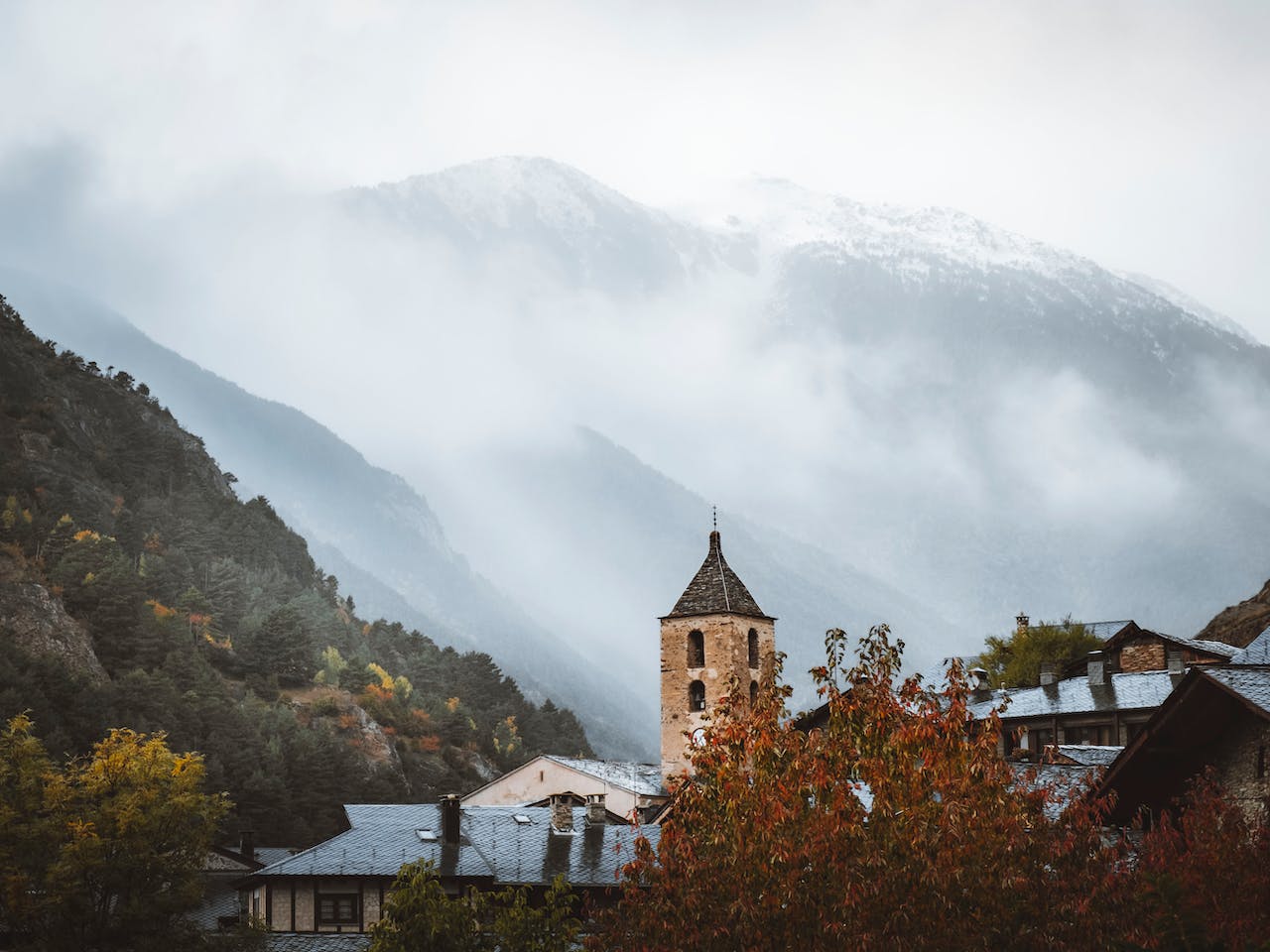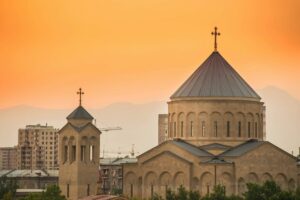1: Topography and Terrain
A microstate renowned for its breathtaking natural beauty, Andorra is tucked away in the Pyrenees between France and Spain. Its modest area (181 square miles) hides the enormous beauty of its scenery. The country stands out for its impressive mountain ranges, lush valleys, and quaint communities scattered throughout the landscape.
Andorra’s terrain is dominated by the Pyrenees, which provide a variety of outdoor activities year-round. The area becomes a skiing and snowboarding enthusiast’s paradise in the winter. Grandvalira and Vallnord, two of the principality’s several ski resorts, draw visitors from all across Europe and beyond. These activities are set against the picturesque backdrop of the snow-capped peaks, which exudes an air of calmness and excitement.
The scenery changes once more in the summer, providing chances for hiking, mountain biking, and discovering the natural beauty of its lakes and valleys. A monument to Andorra’s compelling natural wonders is Tristaina Lakes, which are tucked away in lovely surroundings.
In addition to shaping the principality’s beauty, the Pyrenees, which dominate its topography, have a major impact on its history, culture, and economy. The Andorran people, who have traditionally been linked to the land through pastoralism and agriculture, have a style of life that is greatly influenced by their physical environment.
2: Distinct Political Organization
Because of its dual position as a principality, Andorra has a unique political structure. In contrast to most nations, which are headed by a single head of state, Andorra is ruled by two co-princes: the French President and the Spanish Bishop of Urgell. Andorra’s governmental system is among the oldest in the world to still be in operation due to this unusual arrangement that was put in place in the 13th century and has lasted for centuries.
With parliamentary democracy holding the executive branch’s power, the co-princes’ functions are primarily ceremonial. The parliament of Andorra, the General Council, is made up of 28 members who are chosen by the people every four years. The co-princes’ presence is essentially symbolic, as this council establishes the government and oversees daily operations in the principality.
This unique political structure demonstrates Andorra’s dedication to maintaining its history while accepting contemporary ideas of representation and governance. It does this by fusing ancient tradition with modern democratic rule.
3:Resilience of the Economy and Tourism
Over time, there has been a notable shift in Andorra’s economy. Once heavily dependent on pasture and agriculture, the principality has effectively diversified its economy, with tourism playing a key role. Travelers looking for both shopping and natural beauty are drawn to the nation by its amazing landscapes and advantageous tax laws.
Being a tax haven that attracts tourists looking to shop duty-free is one of Andorra’s distinctive features. The principality’s economy is greatly boosted by the lack of value-added tax (VAT) on the majority of items, which draws in customers from nearby nations.
The nation’s ski resorts, hiking paths, and wellness spas are major draws for tourists, even aside from shopping. Due to its year-round natural beauty and abundance of outdoor activities, Andorra attracts large numbers of tourists. The principality has demonstrated its resilience in the face of economic changes by being able to benefit from its natural resources and adapt to changing tourist tastes.
4: A Wealthy Cultural Past
With a blend of Spanish, French, and Catalan elements, Andorra’s cultural legacy is a tapestry that has molded the country’s distinct identity. The language, traditions, and customs of the Andorran people all clearly show the strong influence of Catalonia.
The nation offers a glimpse into its rich legacy throughout the year as it celebrates a variety of festivals and cultural events. Events that celebrate Andorran customs, music, dance, and food include Sant Antoni, Diada de Meritxell, and the National Day of Andorra.
One may see evidence of the principality’s historical origins in the Romanesque architecture that is dispersed throughout it. The region’s relationship to the land and its people, as well as its mediaeval past, are reflected in the churches, bridges, and homes. One of Andorra la Vella’s most famous ancient homes, Casa de la Vall, is a symbol of the nation’s political past and cultural heritage.
5: Sustainability and Conservation of the Environment
Andorra, for all its modest size, is very conscious of sustainability and environmental preservation. Recognizing the value of protecting its natural assets for future generations, the principality has put policies in place to protect its ecosystems and biodiversity.
Andorra’s policies clearly show that the country is working to maintain its beautiful landscapes, save wildlife habitats, and encourage sustainable tourism. To protect native plants and animals, the nation has declared a number of places as nature reserves.
Furthermore, Andorra is dedicated to encouraging environmentally responsible behaviors and lowering its carbon footprint. Initiatives focused on waste management, renewable energy, and responsible tourism promotion serve as examples of its commitment to environmental stewardship.
Andorra is a microstate that captivates people with its unique combination of modernity, history, and natural beauty. Its growing tourism sector, magnificent landscapes, unusual governmental framework, rich cultural legacy, and dedication to sustainability make it an unforgettable place to visit.





